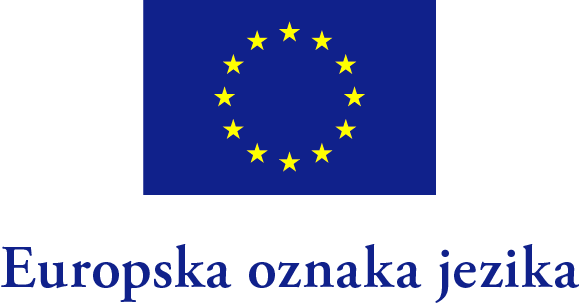| « April 2024 » | ||||||
| Mo | Tu | We | Th | Fr | Sa | Su |
| 1 | 2 | 3 | 4 | 5 | 6 | 7 |
| 8 | 9 | 10 | 11 | 12 | 13 | 14 |
| 15 | 16 | 17 | 18 | 19 | 20 | 21 |
| 22 | 23 | 24 | 25 | 26 | 27 | 28 |
| 29 | 30 | 1 | 2 | 3 | 4 | 5 |
| 6 | 7 | 8 | 9 | 10 | 11 | 12 |
Ukupno: 1225794
Danas: 2

Bulgarian currency - lev (лев)
Our intern from Bulgaria writes about currency of her country.
Bulgarian lev (“лев” is an old word for “лъв” which translates as “lion”) is the official Bulgarian currency. It was introduced in 1885, a few years after Bulgaria declared independence from the Ottoman empire. One Bulgarian lev consists of 100 stotinki (coins) and is fixed to the Euro: 1 EUR = 1.96 BGN.
The history of our currency follows the economical and political changes our country throughout the years. Yet, I believe, more interestingly, the notes present some of the most honorable and famous politicians, writers and artists.

You can find coins of 1, 2, 5, 10, 20 and 50 stotinki. They look more or less the same. On the tails' side of the coin you can see Madara Rider. In the region of Shumen, some 20 meters above the ground a relief of a rider stabbing a lion is carved in the cliffs. The monument is dated in the 7th-8th century and is part of the UNESCO world heritage list since 1979.

The coin of 1 lev was introduced later and in 2016 the 2 lev coin replaced the notes. The 1 lev coin has the image of Saint Ivan Rilski. Born in 874, he was one of the most famous monks in Bulgaria. After a lifetime of service to God and the church, helping the poor and sick, establishing one of the most beautiful Bulgarian monasteries – the Rila monastery, he died in 946 and was later proclaimed a saint.

On the back of the 2 lev coin is the image of Saint Paisius of Hilendar - a monk who lived between 1722 and 1773 with incomparable contribution to the preservation of Bulgarian language, culture and identity. In the times when the Ottoman rule was already strong and both the Ottoman and Greek languages and culture were influential in all aspects of life, Paisus wrote Istoriya Slavyanobulgraska. The most memorable with part of this writing is its introduction: "Why are you ashamed to call yourself Bulgarian?" Followed by a summary of the most important Bulgarian achievements at the time. The book became the symbol of the Bulgarian Renaissance. It was re-written and distributed to strenghten the spirit of a ruled nation.

Moving on to the banknotes, after the introduction of 2 lev coin, the first note is the 5 lev one. On the note you can find Ivan Milev Lalev. Born on 18 February 1897, he was a Bulgarian painter and scenographer. He is regarded as the founder of the Bulgarian Secession and a representative of Bulgarian modernism, combining symbolism, Art Nouveau and expressionism in his work. On the note, a quote by Ivan Milev reads: “To me all of this is a miracle. I believe in my miracle as I believe in myself.”

The 10 lev banknote shows Peter Beron. A medical doctor, philosopher, scientist, polyglot and pedagogue. It's hard to summarize his contribution to science in a few lines. Spending most of his life in research and teaching abroad his activism for improvement of Bulgarian education never ceased. He funded many schools and his most famous work is the “Fish textbook” - a student's book of Bulgarian language that got its name from the whale on the cover (thus the image of a whale on the banknote).

On the 20 lev note we find Stefan Stambolov. Born on 12 February 1854, he participated actively in preparation of the April and Stara Zagora uprisings against Ottoman rule. Despite being criticised for his dictatorial methods, he was among the initiators of the economical and cultural progress in Bulgaria before the Balkan Wars.

On the 50 lev banknote is the image of Pencho Slaveykov. He was born in 1866 and after illness in his early years he was handicapped for life. Following in the footsteps of his father, Petko, he became a poet. He studied philosophy and was influenced by the works of Friedrich Nietzsche. Nietzsche's ideas can be found in Slaveykov's poems. Later his work includes translation, teaching, management of the national library and the national theatre until his death in 1912.

Last but not least - the bank note of 100 lev has the image of Aleko Konstantinov. Konstantinov is one of the most popular Bulgarian writers, famous for his vividly described journeys around the world and his satirical stories. One of his most recognizable characters – Bai Ganyo – is a satirical illustration of the challenges many Bulgarians meet when interacting with Europeans. Apart from his writing career he stands out for establishing the Bulgarian Tourist Association and greatly contributing to the exploration of the Bulgarian mountains and nature.
Adriana Rangelova (Адриана Рангелова)



